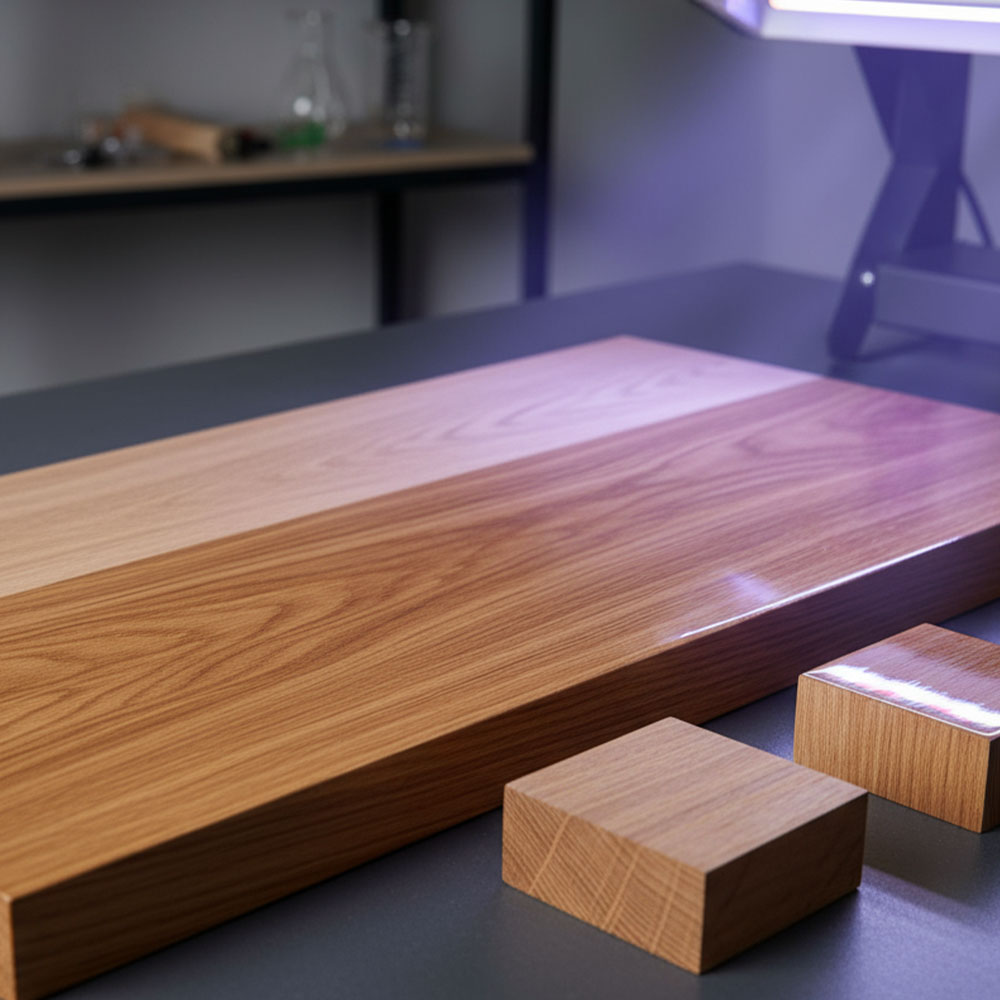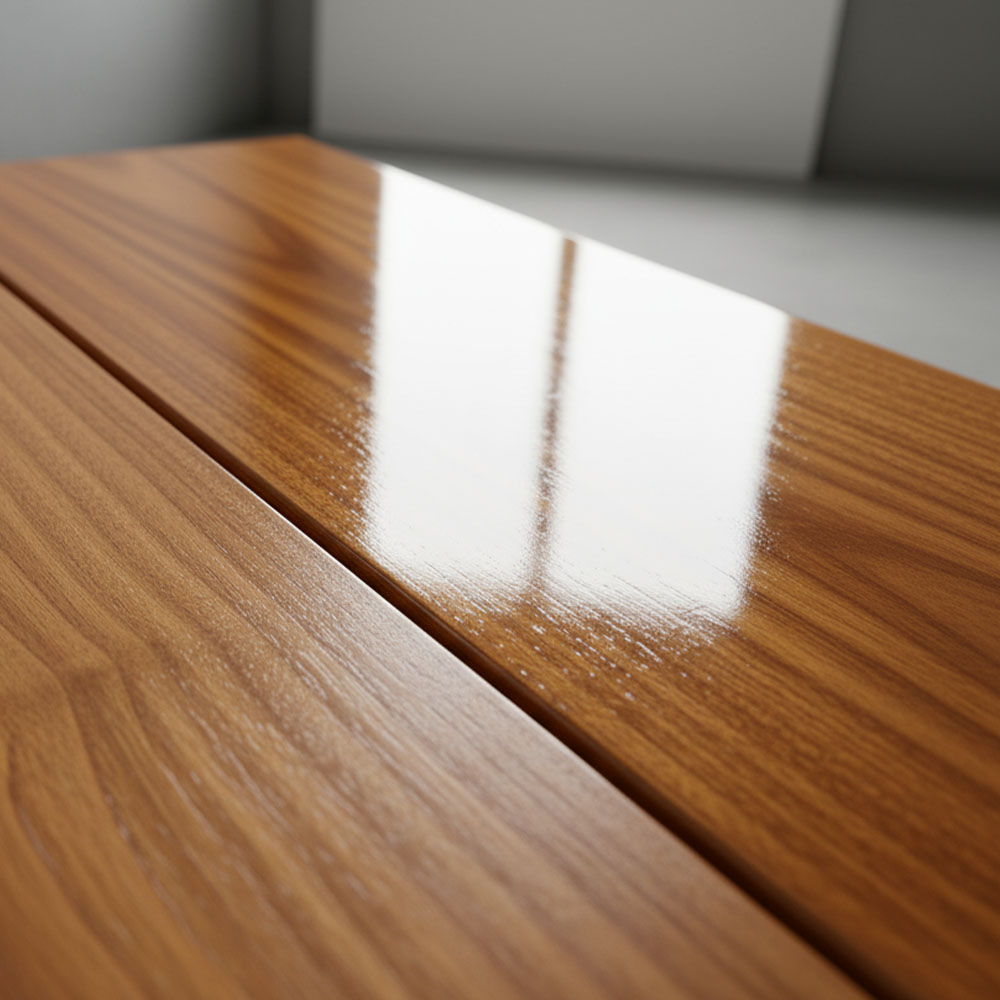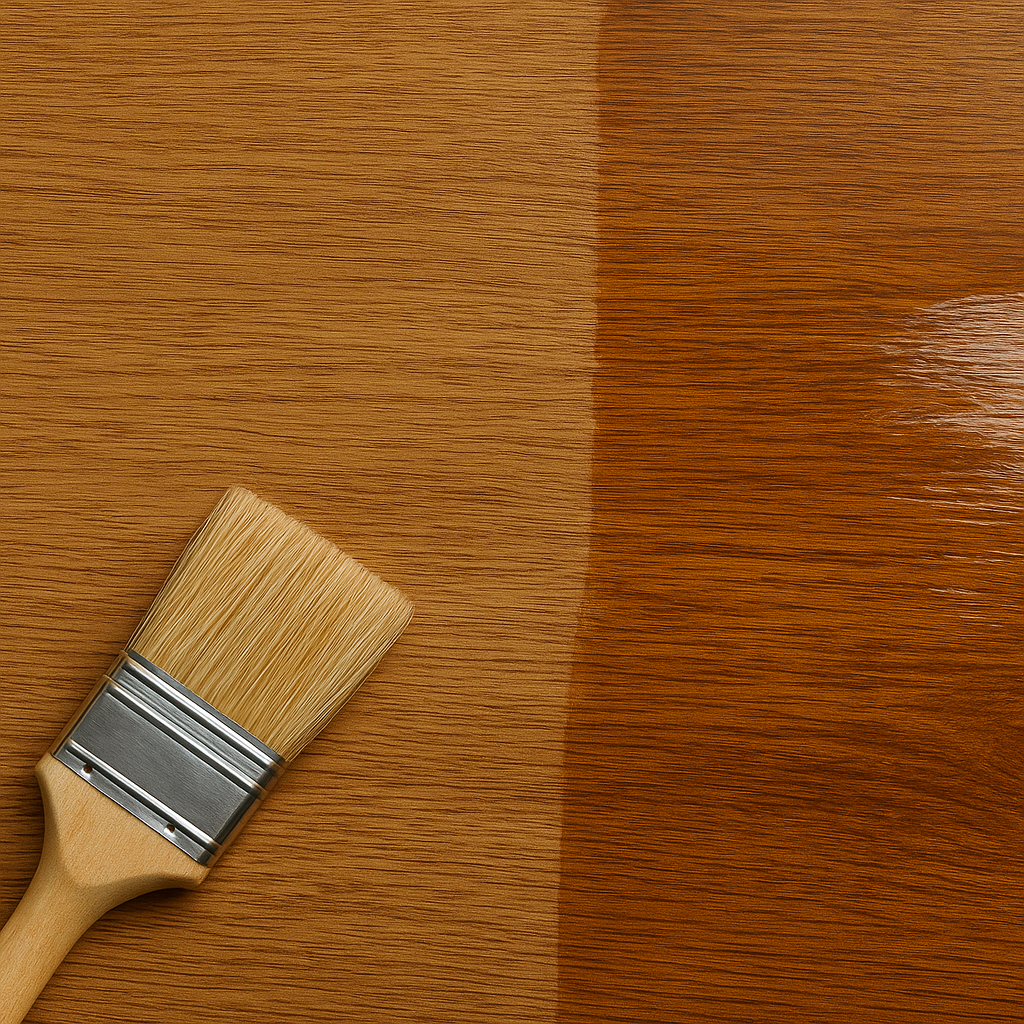Choosing the right wood finish can make a huge difference in the durability, appearance, and maintenance of your project. When comparing water-based varnish vs UV varnish, it’s important to understand their unique characteristics, benefits, and ideal applications. Both types offer different advantages — from eco-friendly features to superior protection — but one may fit your specific needs better. This guide explores the differences between water-based and UV varnishes so you can confidently choose the best option for your next woodworking or furniture project.
What Is Varnish?
Varnish is a clear protective coating applied to wood or other materials to enhance durability and appearance. It forms a hard, glossy, or matte finish that protects the surface from scratches, moisture, and UV exposure. Traditionally, varnish is made from resins, solvents, and drying oils, but today, different types such as water-based varnish and UV varnish are used to meet modern performance and environmental standards.
Understanding the Types of Varnish
Before comparing water-based varnish vs UV varnish, let’s briefly look at the main types available today.
Oil-Based Varnish
Oil-based varnishes are known for their warm tone and durability. They penetrate deeply into the wood grain, enriching color and texture. However, they emit volatile organic compounds (VOCs), take longer to dry, and tend to yellow over time.
Water-Based Varnish
A water-based varnish uses water as its primary solvent instead of harsh chemicals. It produces fewer VOCs, dries faster, and maintains the natural color of the wood without yellowing. This makes it an ideal choice for eco-conscious projects and indoor applications.
UV-Cured Varnish
UV varnish is cured instantly using ultraviolet light, forming an extremely hard and durable surface. It offers superior resistance to wear, chemicals, and scratches, making it perfect for high-traffic environments or commercial furniture.
Water-Based Varnish: Features and Benefits
When comparing water-based varnish vs UV varnish, water-based finishes stand out for their simplicity and eco-friendliness.
- Low VOC and Environmentally Friendly:
Water-based varnishes are safer for both users and the environment. They emit fewer fumes and are suitable for indoor spaces with limited ventilation.
- Fast Drying Time:
These finishes dry much faster than oil-based alternatives, allowing multiple coats to be applied in one day and reducing overall project time.
- Clear Finish Without Yellowing:
One of the biggest advantages of water-based varnish is that it preserves the natural color of wood. It’s especially beneficial for lighter wood species like maple, birch, or ash.
- Easy Application and Cleanup:
You can apply water-based varnish with a brush, roller, or sprayer, and cleanup only requires soap and water.
However, it’s worth noting that water-based varnishes can be slightly less durable than UV finishes. They may need periodic reapplication in high-use areas to maintain optimal protection.
UV Varnish: Features and Benefits
UV-cured varnish represents the latest innovation in wood finishing. When exposed to ultraviolet light, the varnish hardens almost instantly, creating a tough and resilient coating.
- Superior Durability:
UV varnish forms a rock-hard surface that resists scratches, abrasion, and chemical exposure. It’s ideal for flooring, furniture, and cabinetry that must endure heavy use.
- Instant Curing Process:
The biggest advantage is the curing speed. Once exposed to UV light, the finish hardens immediately, eliminating long drying times and production delays.
- Zero VOC Emissions:
UV varnishes are solvent-free and emit zero volatile organic compounds, making them one of the most sustainable and worker-safe finishes available.
- Excellent Gloss and Clarity:
UV coatings enhance the depth and richness of color while maintaining crystal-clear transparency. They can be formulated for high-gloss, satin, or matte finishes.
On the downside, UV varnishes require specialized equipment and expertise for proper application, which can increase production costs. They’re best suited for industrial or professional settings where speed and durability are top priorities.
Water-Based Varnish vs UV Varnish: Key Differences
| Feature |
Water-Based Varnish |
UV Varnish |
| Curing Method |
Air-dried |
UV light-cured |
| Drying Time |
1–2 hours per coat |
Instant |
| VOC Emissions |
Low |
Zero |
| Durability |
Moderate |
Very high |
| Application Method |
Brush, roller, spray |
Specialized UV equipment |
| Ideal Use |
Interior woodwork, furniture |
Commercial floors, high-wear furniture |
| Finish Options |
Clear, satin, matte |
Glossy, satin, matte |
(Removed for SEO cleanliness: real post would use bullet points instead of table if you prefer purely text-based formatting.)
When to Choose Water-Based Varnish
Water-based varnish is the right choice when you need:
- A natural, non-yellowing finish that highlights the wood grain.
- A low-odor and eco-friendly product safe for indoor use.
- Quick project turnaround with easy cleanup.
- An ideal option for DIY or small-scale projects.
It’s especially suited for furniture, doors, cabinets, and decorative wooden surfaces where moderate durability is sufficient.
When to Choose UV Varnish
Go for UV varnish when you need:
- Maximum durability for commercial or high-traffic areas.
- Scratch and chemical resistance for flooring or tabletops.
- Instant curing for industrial efficiency.
- A professional finish with long-term protection.
While the initial cost of UV varnish may be higher, its longevity and performance make it a cost-effective investment over time.
Tips for Application and Maintenance
Whether you choose water-based varnish or UV varnish, proper application ensures the best results.
- Prepare the Surface:
Sand the wood thoroughly to remove imperfections, then clean away dust before applying varnish.
- Apply in Thin Coats:
Multiple thin layers provide better adhesion and smoother finishes than one thick coat.
- Follow Manufacturer Instructions:
Each varnish type has specific curing or drying requirements. Adhering to these will enhance both durability and appearance.
- Regular Maintenance:
Clean surfaces with a damp cloth and avoid harsh chemicals that may dull the finish. For high-use furniture, consider reapplying water-based varnish every few years.
Final Thoughts: Choosing Between Water-Based and UV Varnish
So, water-based varnish vs UV varnish — which is right for you?
It ultimately depends on your priorities.
If you value ease of use, low odor, and environmental safety, water-based varnish is an excellent all-around choice. It’s perfect for home projects and residential interiors where aesthetics and safety come first.
If durability and professional-grade protection are essential, UV varnish stands unmatched. Its quick curing, zero VOC emissions, and superior hardness make it ideal for manufacturers and high-traffic applications.
In either case, choosing the right finish not only enhances the beauty of your wood but also extends its lifespan — protecting your investment for years to come.


